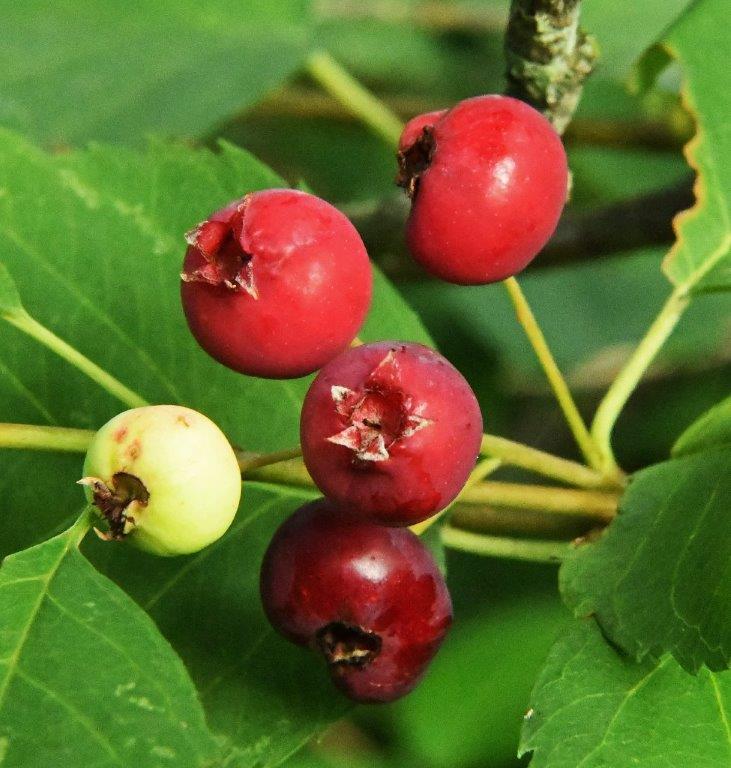Berries and Bears - UPDATE July 21, 2023

Guy and Alvin
Berries have been the big talk here lately. For the Black Bear Field Courses, Andrea the cook made sure we had wild blueberries and wild juneberries (a.k.a. Serviceberries [Amelanchier sp.] to put on our oatmeal. For one of the dinners, she served wild salmon in memory of a brown bear trip she once took to Alaska.
Blueberries

Juneberries

Wild sarsaparilla berries

In the forest, the bumper crop of juneberries is waning (and we’re seeing more bears). Blueberries are ripening with more to ripen throughout August. But the big thing now is a shift to a major favorite that is coming on strong—wild sarsaparilla berries (Aralia nudicaulus). These berries are such a favorite that the bears essentially pass up blueberries during their peak from late July into early August when they can eat sarsaparilla berries that are not only spicy-sweet but are efficient to eat. Each plant has a leaf stem about a foot tall that more or less hides three clusters of berries on a shorter berry stem (shown above).

Sarsaparilla season is revealed by very dark-colored droppings. Bear scat dark from berriesThe dark scat pictured already has the dark color. It is a mix of juneberries, blueberries, and sarsaparilla berries as we move into the sarsaparilla season. By mid-August, sarsaparilla berries will be waning and the bears will be switching back to blueberries and, with luck, a bonanza of pin cherries, chokecherries, and dogwood berries—along with hazelnuts and more. We’ll see what develops.
A bear we are happy to see again this year is Guy. He is showing his age that we believe is in his mid-twenties. Yesterday, he gave another clue. Letting us see his teeth, we saw he is missing four or his six lower incisors, that his canines are a little worn, and that he has a wide cementum-enamel (c-e) margin on his canines. The c-e margin is the dark area of cementum between the gum and the light-colored enamel. Cementum covers the root. Enamel covers the crown. Guy's teethAs the tooth grows out, the line between the two areas reaches the gum line at 3 or 4 years of age and grows out a tiny bit each year after that. Not many bears have a c-e margin as wide as his.
An interesting thing about this calm, accepting bear is that he has never generated a nuisance complaint, does not go up to people except at diversionary feeding sites, and he has survived longer than most. He is a gentle bear whose return we are glad to see or hear of. As a sign of his generally gentle nature, he calmly shares his nuts with this ultra-trusting chipmunk we’ve named Alvin. (shown at top)

Thank you for all you do,
Lynn Rogers, Biologist, Wildlife Research Institute and North American Bear Center

 Author
Topic: Jewel and her cubs (Read 2387167 times)
Author
Topic: Jewel and her cubs (Read 2387167 times)
